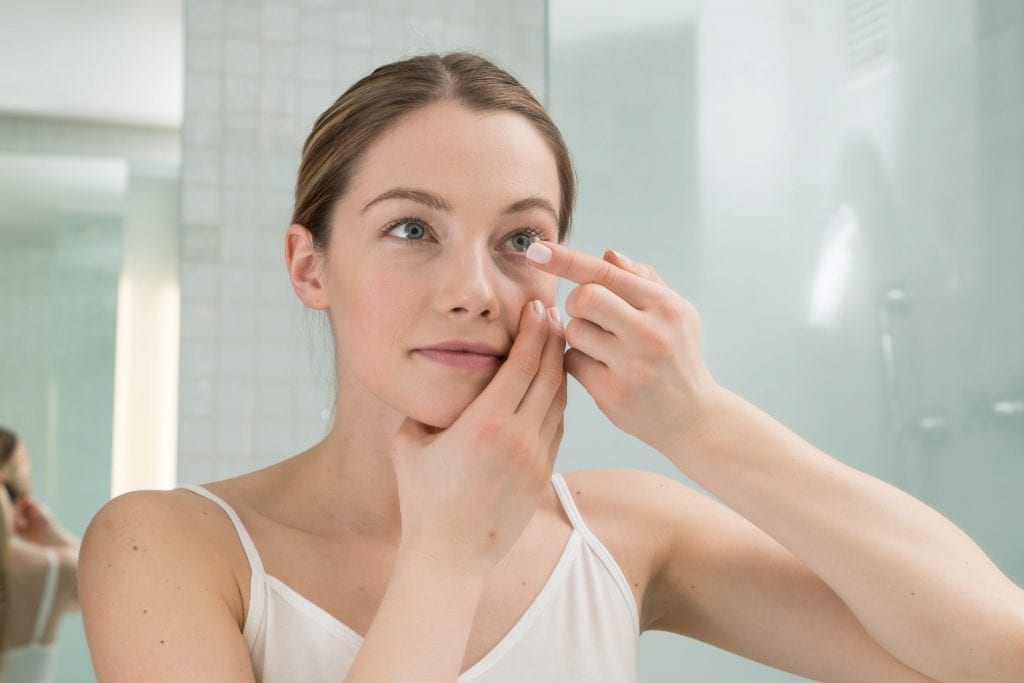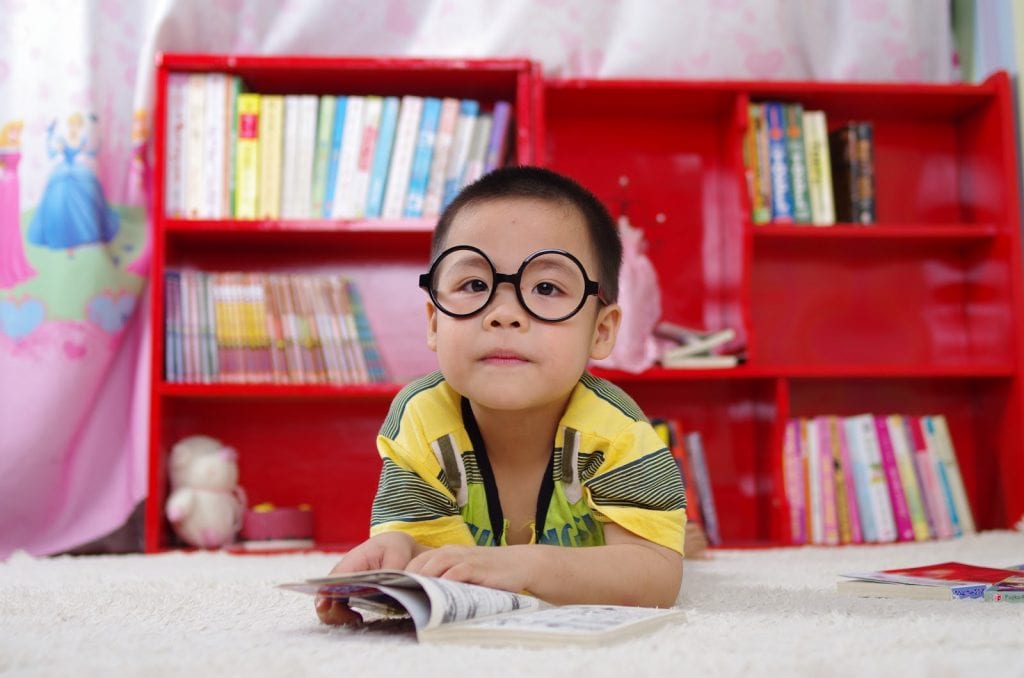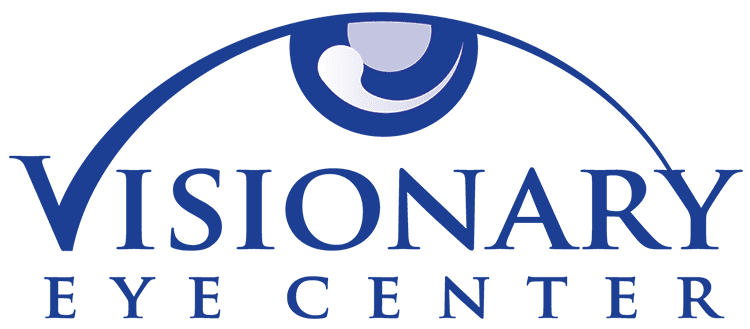SHOP DRY EYE CARE TODAY!
Use code VISIONARYEYE20 at checkout for 20% off!
For those that suffer from nearsightedness (myopia) or astigmatism, there may be a better solution out there for you than wearing corrective lenses daily or undergoing risky surgery. The latest method of myopia control in Reno is the use of orthokeratology, or ortho-k, which is accomplished through a retainer lens worn solely at night while you sleep. Not only is ortho-k a great treatment for patients seeking unique or custom eye care, it also offers freedom from the hassles of daily wear correction methods like soft contact lenses and glasses.
If you or someone you know is struggling with myopia or astigmatism and the traditional treatment methods aren’t meeting your active lifestyle needs, connect with Northern Nevada optometrist Dr. Bolenbaker to discuss the possibility of starting orthokeratology.

Orthokeratology, also called ortho-k, corneal refractive therapy, or gentle vision shaping, is a non-surgical method of reshaping the cornea for improved vision. Ortho-k is a custom eye care solution that uses fitted corneal molds and retainers to put gentle hydraulic pressure on the cornea that flattens its surface to correct the way your eye takes in light. It works similarly to LASIK with the risks of surgical complications and dry eye. And unlike contact lenses worn during the day, ortho-k treatments work overnight so you are free from correction while you are awake.
To fully understand how orthokeratology works, you first have to understand how our eyes take in light and transform it into an image that we’re able to see. When light rays are focused properly through the cornea and reach the retina, you see a clear image. When there is a mismatch between the curvatures in the cornea and the length of the eye, light cannot be focused properly thus resulting in blurred vision.
Ortho-k works to reshape the cornea so that incoming light bends accordingly, presenting a clearer image. Unlike everyday contact lenses that are worn to correct vision while awake, ortho-k lenses use gentle hydraulic forces to temporarily reshape the cornea for prolonged effects. Wearing the molds at night results in effects that last well into the next day which is why this has become a preferred method of myopia control in Reno for active children.

Good candidates for the ortho-k treatment include patients with mild to moderate myopia or nearsightedness, or those with minor astigmatism. Orthokeratology is FDA approved to correct nearsighted patients with prescriptions under -6.00D of myopia and less than -1.75D of astigmatism. Children make great candidates for this method of myopia control due to their typically mild symptoms and flexible corneas. Adults that would prefer a non-surgical correction option may also be a great candidate.
Myopia, more commonly known as nearsightedness, is a refractive error that causes blurred vision when looking at objects that are far away. This is typically due to axial elongation, making the eye longer than the cornea curvature can focus the light taken in by the eye. Ortho-k has been shown in multiple studies to slow the elongation of an of the eye. It is hypothesized that the peripheral myopic defocus along the horizontal and vertical meridians of the eye induced by wearing ortho-k molds tricks the eye into thinking it has grown too long, halting the signal for continued growth. If the eye does not continue to grow, myopia progression is decelerated, thus slowing the worsening of your nearsightedness.
As with any sort of corrective lens to improve vision, there may be some risks involved, however, the risk of adverse effects caused by ortho-k is extremely low. The symptoms you may experience while using orthokeratology are very similar to the risks associated with wearing traditional contact lenses. Essentially, the risks can easily be prevented and managed with good hygiene practices.
Ultimately, the benefits of ortho-k largely outweigh the risks associated with the treatment method. One of the most notable benefits of orthokeratology is its ability to effectively improve vision while the patient is asleep, thus not impeding their daily activities. The most common list of risks and benefits are as follows:

Here, at the Visionary Eye Center, we strive for customized eye care solutions for our Reno-Sparks patients. As each patients’ needs are unique, our treatment should be as unique as you.
Myopia is the condition that is commonly referred to as nearsightedness, and recent studies have revealed that it is becoming increasingly common in children. Myopia is caused by the lengthening of the eye from front to back, and consequently, light is focused in front of the retina and not directly on it—causing far-away objects to be blurry. Myopia progresses quickly in children if not treated, but there are now multiple myopia control options that can slow down or the progression.
So you may be asking yourself what exactly is myopia control? It is the use of treatments, medicines, eyeglasses, and contacts to reduce the progression and risk of eye disease from myopia.
 The most crucial aspect of myopia control is being proactive. This means communicating early and often with your eye doctor. Later complications from myopia can include serious, even life-threatening, complications such as glaucoma, cataracts, retinal detachment leading to blindness.
The most crucial aspect of myopia control is being proactive. This means communicating early and often with your eye doctor. Later complications from myopia can include serious, even life-threatening, complications such as glaucoma, cataracts, retinal detachment leading to blindness.
In regards to children—because they are still growing—even if they aren’t experiencing eyesight problems, it’s important to take them in regularly to get their eyes checked. There is a much greater chance of success with the myopia control options if you are proactive and aware.
Experts say that adults and children should be getting at least 2 hours of sunlight per day to reduce the chance of myopia onset. Studies are inconclusive at this time whether this prevention technique helps slow progression in children that already are myopic.
The best thing to do to start is getting with your optometrist to create a personalized treatment plan. The most common myopia control options are atropine eye drops, multifocal contacts, orthokeratology (Ortho-k), and special types of glasses.
Atropine eye drops: As more and more people are being diagnosed with myopia, atropine eye drops have come out as one of the most effective control options. Multiple studies have shown the higher the dose of atropine the better the control. Atropine in higher doses dilates the pupil, but studies have also shown very low dosages (.01-0.05%) can effectively slow myopic progression without bothersome side effects.
The use of a low dosage drop—used usually before bed—has shown to substantially slow the effects of myopia in children compared to those who don’t.
Multifocal contacts: Multifocal contact lenses have also been proven to be effective. The FDA even recently approved the MiSight 1 day for myopia control, the first soft contact lens to carry such designation. This option can be used as a sole treatment or in combination with low dose atropine.
Bifocal Glasses: Lined bifocals have been shown to slow myopia correction by a small but meaningful amount. If your child is hesitant about eye drop and contact lens options this is a great alternative to get them started on myopia control therapy.
Orthokeratology (Ortho-k): Ortho-k has been at the forefront of myopia control options for many years. They are a set of gas permeable contacts worn at night that gradually reshape your eye, eliminating the need for daytime glasses or contacts as well as slowing the progression of myopia.
This control option is becoming increasingly popular because it is a non-surgical alternative to LASIK.
The prevalence of myopia has increased dramatically in the United States over the last 50 years, with almost 40% of the US population being nearsighted today, compared to just 25% in the 1970s. While genetics play a key role in many patients, environmental aspects like increased time indoors and increased levels of near work have also been implicated in this dramatic rise. As myopia can occur even in children with no family history, it is imperative to talk with your child and see your optometrist often.
Myopia studies are increasing, but doctors are unable to offer a foolproof explanation of who will or will not develop myopia or significant myopic progression.
 Factors include increased screen time, decreased time outdoors, and long periods of near work like reading. Studies have also shown that the under-correction of myopia in eyeglasses or contacts may contribute to myopia progression.
Factors include increased screen time, decreased time outdoors, and long periods of near work like reading. Studies have also shown that the under-correction of myopia in eyeglasses or contacts may contribute to myopia progression.
As technology becomes increasingly integrated into our everyday lives, it is also posing health risks. While the evidence is not clear cut, many doctors agree that there is a correlation between screen time and the increased prevalence of myopia.
A study from the Singapore Eye Research Institute concludes that since the introduction of smartphones and tablets there has been a rise in myopia, but the results are “mixed.”
Visionary Eye Center strives to provide all of our patients with custom eye care and the knowledge to make the best decisions for their care. To learn more about our Reno myopia control services, contact us to get started!
 775.827.1100info@visionaryeyecenter.com8175 South Virginia Street Suite B-900
775.827.1100info@visionaryeyecenter.com8175 South Virginia Street Suite B-900